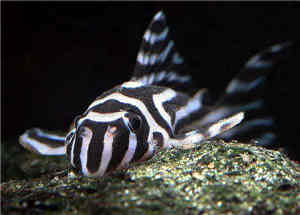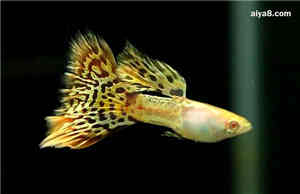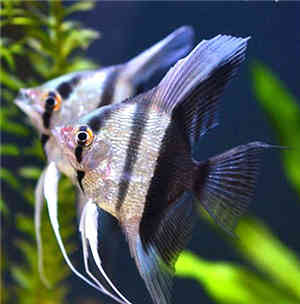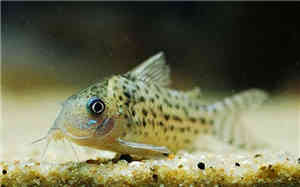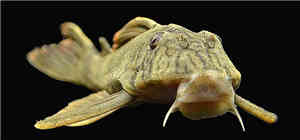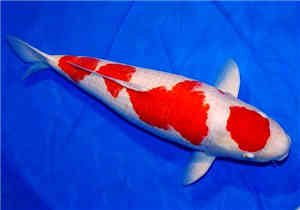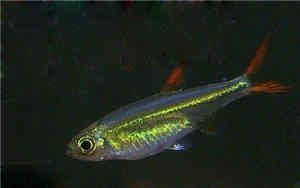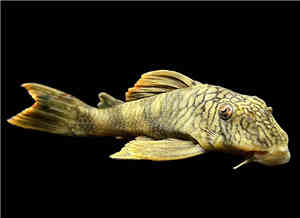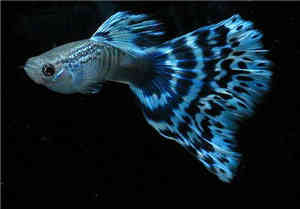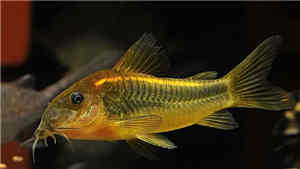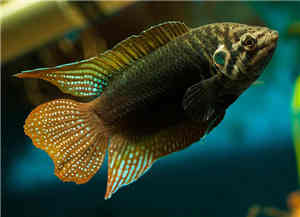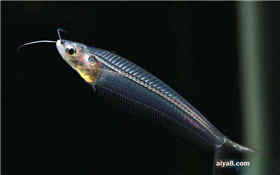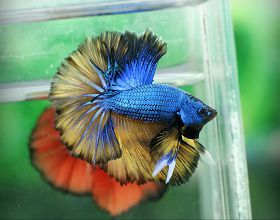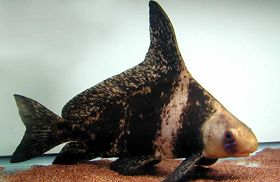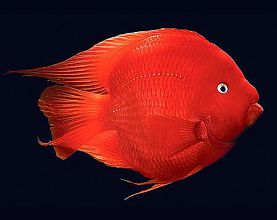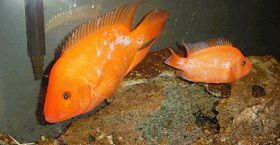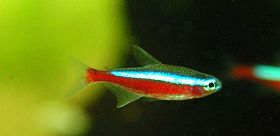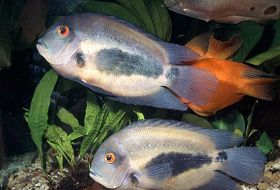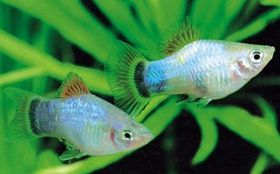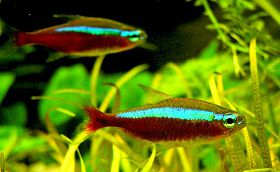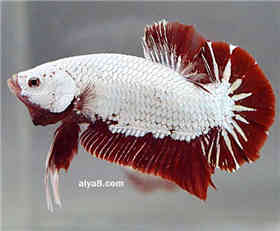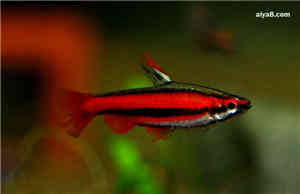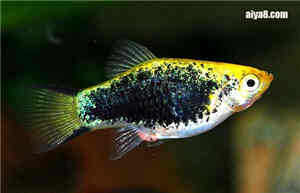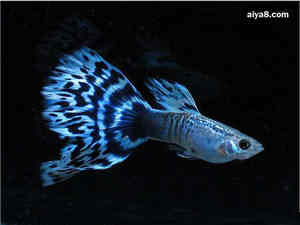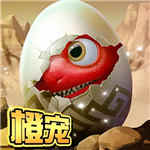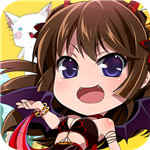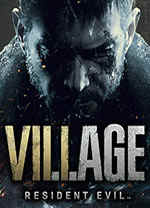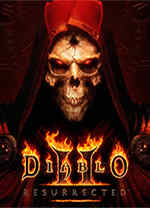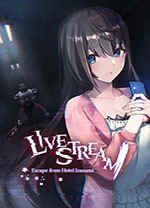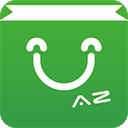

 圣伯纳犬AKC标准及介绍(Saint Bernard)
圣伯纳犬AKC标准及介绍(Saint Bernard)短毛型
[圣伯纳犬简介]
充满力量、比例匀称且轮廓丰满,每一部分都很结实且肌肉发达,有力的头部和非常聪明的表情。面部有深色面具,使表情显得严厉,但不凶恶。
[圣伯纳犬的头部]
如同身躯一样,头部显得充满力量而壮观。魁梧的脑袋,宽阔,略拱且两侧(上颊骨)倾斜,构成优雅的曲线,轮廓坚实。一道深沟从口吻根部开始,经过两眼之间,穿过整个脑袋。开始的一半非常清晰,向后逐渐消失在后枕骨。头部侧面线条从外眼角开始分岔,到头部后面。前额的皮肤,眼睛上方,有明显的皱纹比较理想,或多或少,但清晰,向深沟聚拢。当他警惕或注意什么的时候,皱纹更多,但不会造成愁眉苦脸的样子。过分夸张的皱纹不受欢迎。从脑袋到口吻的过度(止部)突然且陡峭会比较理想。口吻短,不呈锥形,口吻的垂直深度比长度要大。鼻梁不能圆拱、直,有些狗有时看起来象被截断的。口吻宽、显著,鼻梁上从口吻根部到鼻镜有浅沟。上嘴唇非常发达,不能非常整齐,而是形成一个优美的曲线覆盖在下颚上,略显下垂。下嘴唇不应该下垂的很深。牙齿整齐、结实,剪状咬和或钳状咬和,虽然,有些很优秀的狗会出现下颚突出式咬和,但不理想,上颚突出式咬和属于缺陷。口腔顶部(天花板)以黑色为好。
[upload=jpg]UploadFile/2009-8/200983014435417901.jpg[/upload]
鼻镜
非常坚实、宽阔、带有宽大的鼻孔,象嘴唇一样,必须为黑色。
耳朵
中等大小,位置高一些会比较好,耳根处有非常发达的边缘,耳根竖立在头部,使耳朵在离头部稍远的位置,下垂的耳朵,边缘靠着头部,没有旋转。耳翼为柔嫩的圆角三角形,尖端略长。当他警惕时,耳朵前边缘稳稳的靠在头部边上,而后边缘离头部略远。如果耳朵轻松的安在头部,耳根直接靠在头部,会形成头部的卵形外观,很不醒目,反之,有力的耳根会形成方形的头部,宽阔且非常醒目。
眼睛
大部分靠前,而不在侧面,中等大小,深褐色,眼神聪明、友善,深度合适,严格意义上,下眼睑不能完全贴和眼球,因为皮肤的皱纹会使眼睑内翻。眼睑过度下垂、太红、瞬膜太厚、眼睛颜色太浅都属于缺陷。
[圣伯纳犬的颈部]
位置高,非常结实,当他警惕时或注意什么的时候会向上举,其他时候则水平放置或略向下。颈部与头部结合处有明显凹痕。颈背肌肉非常发达且圆,从侧面观察颈部显得很短。喉咙和颈部的赘肉非常明显;但过分夸张就不好了。
[圣伯纳犬的肩部]
倾斜、宽阔,肌肉非常发达且有力,马肩隆非常坚固。
[圣伯纳犬的胸部]
非常良好的圆拱,深度适中,达到肘部。
[圣伯纳犬的背部]
非常宽,到腰部为止都非常直,臀部略斜,与非常轻微的尾根结合。
[圣伯纳犬的后躯]
充分发育,腿部肌肉非常发达。
[圣伯纳犬的腹部]
明显的位于非常有力的腰部以下,非常轻微的上提。
[圣伯纳犬的尾巴]
从臀部开始的部分非常有力、宽阔,尾巴长,尾尖也很有力。休息时,垂直悬挂,只有最后1/3部分略向上弯的话,不被认为是缺陷。有大多数的狗,尾巴悬挂的方式略斜,所以,是以字母“f”的形状。在警惕时,所有的狗,或多或少都会将尾巴上卷,但决不能举的太高或卷到背后。略有卷曲的尾巴是允许的。
[圣伯纳犬的前臂]
非常有力而且肌肉格外发达。
[圣伯纳犬的小臂]
直、结实。
[圣伯纳犬的后腿]
飞节角度中等,不希望有狼爪,如果有,应该不影响步态。
[圣伯纳犬的足爪]
宽,有结实的脚趾,脚趾略紧,趾关节高一些比较好。有时后肢内侧出现狼爪是不良基因造成的,它们对狗本身没有任何用处,在评判时也不考虑,一般都通过外科手术切除。
[圣伯纳犬的被毛]
非常浓密、短(短毛型)、平滑的躺着,毛质硬,但触摸上去的感觉不粗糙。大腿的毛发更浓密一些,尾巴根部毛发略长且密,向尾尖方向逐渐变短。尾巴的毛发浓密但不能象旗子。
[圣伯纳犬的颜色]
白色带红色或红色带白色,红色包括了不同浓度红色斑点、碎块,带白色斑纹。红色和黄褐色是一样的。必须的斑纹是白色胸部、足爪和尾巴尖,颈部有“领子”或斑纹,后者和脸部有白筋比较理想。决不能只有一种颜色或没有白色。缺陷:除了面部和耳朵有深色“面具”外,其他任何颜色都属于缺陷。颜色可以分为披风型和斑块型。
[圣伯纳犬的肩高]
雄性最低肩高为27.5英寸;雌性最低肩高为25.5英寸。雌性的身体结构更漂亮、精致。
[主要缺陷]
任何背离标准的情况都属于缺陷,例如:下凹的后背,背部长度不合比例,飞节角度太大,过直的后躯,脚趾间有向上生长的毛发,肘部外翻,牛肢或软弱的脚腕。
长毛型
长毛型大致与短毛型一样,只是毛发不是短毛,而是中等长度、略呈波浪形的毛发,毛发不能卷曲、也不粗糙,尤其是从腰部到臀部的毛发,起伏的很厉害,相对短毛型的区别不大,只需要略做说明。毛发浓而密,中等长度。卷曲的毛发、旗帜状的尾巴都属于缺陷。脸部和耳朵的毛发短而柔软,耳根处长有长毛是允许的,前肢略有饰毛,大腿毛发浓密[1]。
标准通过日期:1998年4月13日
标准执行日期:1998年5月31日
圣伯纳犬AKC标准及介绍(Saint Bernard)
Saint Bernard Breed Standard
Shorthaired
General
Powerful, proportionately tall figure, strong and muscular in every part, with powerful head and most intelligent expression. In dogs with a dark mask the expression appears more stern, but never ill-natured.
Head
Like the whole body, very powerful and imposing. The massive skull is wide, slightly arched and the sides slope in a gentle curve into the very strongly developed, high cheek bones. Occiput only moderately developed. The supra-orbital ridge is very strongly developed and forms nearly a right angle with the long axis of the head. Deeply imbedded between the eyes and starting at the root of the muzzle, a furrow runs over the whole skull. It is strongly marked in the first half, gradually disappearing toward the base of the occiput. The lines at the sides of the head diverge considerably from the outer corner of the eyes toward the back of the head. The skin of the forehead, above the eyes, forms rather noticeable wrinkles, more or less pronounced, which converge toward the furrow. Especially when the dog is alert or at attention the wrinkles are more visible without in the least giving the impression of morosity. Too strongly developed wrinkles are not desired. The slope from the skull to the muzzle is sudden and rather steep.
The muzzle is short, does not taper, and the vertical depth at the root of the muzzle must be greater than the length of the muzzle. The bridge of the muzzle is not arched, but straight; in some dogs, occasionally, slightly broken. A rather wide, well-marked, shallow furrow runs from the root of the muzzle over the entire bridge of the muzzle to the nose. The flews of the upper jaw are strongly developed, not sharply cut, but turning in a beautiful curve into the lower edge, and slightly overhanging. The flews of the lower jaw must not be deeply pendant. The teeth should be sound and strong and should meet in either a scissors or an even bite; the scissors bite being preferable. The undershot bite, although sometimes found with good specimens, is not desirable. The overshot bite is a fault. A black roof to the mouth is desirable.
Nose (Schwamm) - Very substantial, broad, with wide open nostrils, and, like the lips, always black.
Ears - Of medium size, rather high set, with very strongly developed burr (Muschel) at the base. They stand slightly away from the head at the base, then drop with a sharp bend to the side and cling to the head without a turn. The flap is tender and forms a rounded triangle, slightly elongated toward the point, the front edge lying firmly to the head, whereas the back edge may stand somewhat away from the head, especially when the dog is at attention. Lightly set ears, which at the base immediately cling to the head, give it an oval and too little marked exterior, whereas a strongly developed base gives the skull a squarer, broader and much more expressive appearance.
Eyes - Set more to the front than the sides, are of medium size, dark brown, with intelligent, friendly expression, set moderately deep. The lower eyelids, as a rule, do not close completely and, if that is the case, form an angular wrinkle toward the inner corner of the eye. Eyelids which are too deeply pendant and show conspicuously the lachrymal glands, or a very red, thick haw, and eyes that are too light, are objectionable.
Neck
Set high, very strong and when alert or at attention is carried erect. Otherwise horizontally or slightly downward. The junction of head and neck is distinctly marked by an indentation. The nape of the neck is very muscular and rounded at the sides which makes the neck appear rather short. The dewlap of throat and neck is well pronounced: too strong development, however, is not desirable.
Shoulders
Sloping and broad, very muscular and powerful. The withers are strongly pronounced.
Chest
Very well arched, moderately deep, not reaching below the elbows.
Back
Very broad, perfectly straight as far as the haunches, from there gently sloping to the rump, and merging imperceptibly into the root of the tail.
Hindquarters
Well-developed. Legs very muscular.
Belly
Distinctly set off from the very powerful loin section, only little drawn up.
Tail
Starting broad and powerful directly from the rump is long, very heavy, ending in a powerful tip. In repose it hangs straight down, turning gently upward in the lower third only, which is not considered a fault. In a great many specimens the tail is carried with the end slightly bent and therefore hangs down in the shape of an "f". In action all dogs carry the tail more or less turned upward. However it may not be carried too erect or by any means rolled over the back. A slight curling of the tip is sooner admissible.
Upper Arms
Very powerful and extraordinarily muscular.
Lower Leg
Straight, strong.
Hind legs
Hocks of moderate angulation. Dewclaws are not desired; if present, they must not obstruct gait.
Feet
Broad, with strong toes, moderately closed, and with rather high knuckles. The so-called dewclaws which sometimes occur on the inside of the hind legs are imperfectly developed toes. They are of no use to the dog and are not taken into consideration in judging. They may be removed by surgery.
Coat
Very dense, short-haired (stockhaarig), lying smooth, tough, without however feeling rough to the touch. The thighs are slightly bushy. The tail at the root has longer and denser hair which gradually becomes shorter toward the tip. The tail appears bushy, not forming a flag.
Color
White with red or red with white, the red in its various shades; brindle patches with white markings. The colors red and brown-yellow are of entirely equal value. Necessary markings are: white chest, feet and tip of tail, noseband, collar or spot on the nape; the latter and blaze are very desirable. Never of one color or without white. Faulty are all other colors, except the favorite dark shadings on the head (mask) and ears. One distinguishes between mantle dogs and splash-coated dogs.
Height at Shoulder
Of the dog should be 27½ inches minimum, of the bitch 25½ inches. Female animals are of finer and more delicate build.
Considered as Faults
Are all deviations from the Standard, as for instance a swayback and a disproportionately long back, hocks too much bent, straight hindquarters, upward growing hair in spaces between the toes, out at elbows, cowhocks and weak pasterns.
Longhaired
The longhaired type completely resembles the shorthaired type except for the coat which is not shorthaired (stockhaarig) but of medium length plain to slightly wavy, never rolled or curly and not shaggy either. Usually, on the back, especially from the region of the haunches to the rump, the hair is more wavy, a condition, by the way, that is slightly indicated in the shorthaired dogs. The tail is bushy with dense hair of moderate length. Rolled or curly hair, or a flag tail, is faulty. Face and ears are covered with short and soft hair; longer hair at the base of the ear is permissible. Forelegs only slightly feathered; thighs very bushy.
Approved April 13, 1998
Effective May 31, 1998
